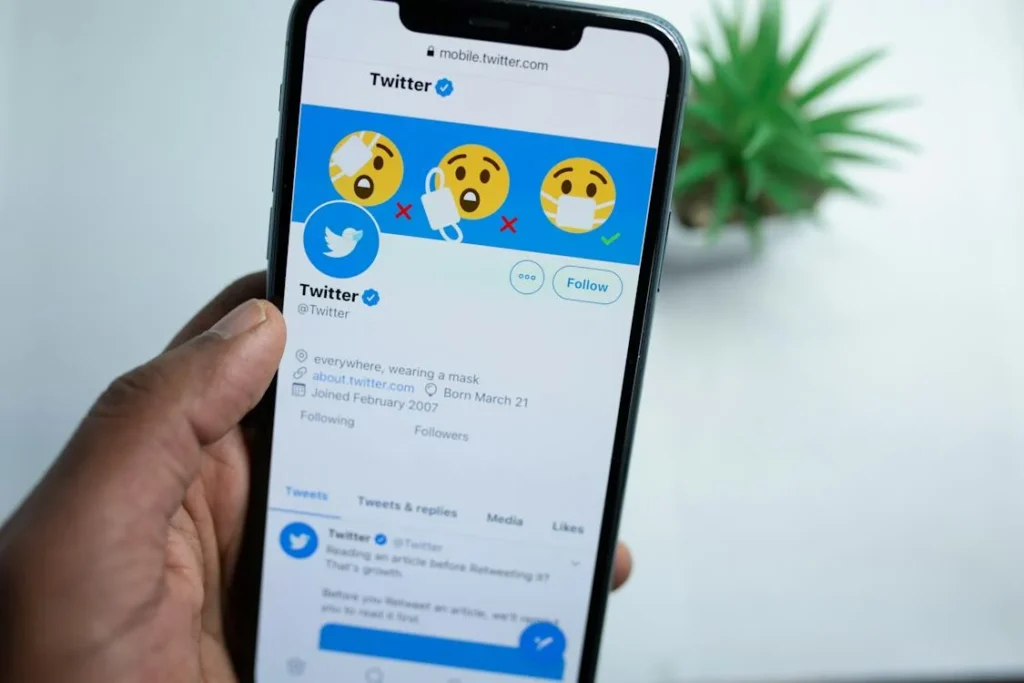Building Brand Identity
Establishing a strong brand identity is essential for fostering customer loyalty. Chick-fil-A serves as a valuable case study in how effective branding can create a dedicated following of customers.
Chick-fil-A’s Success Story
Chick-fil-A has been able to build a loyal customer base and sustain market dominance by focusing on multiple facets of brand identity. The company’s commitment to providing a “remarkable” dining experience and quality food has played a significant role in creating a trustworthy image among consumers. Their focus on community involvement has further reinforced this brand identity, contributing to ongoing customer loyalty.
| Brand Identity Component | Impact on Loyalty |
|---|---|
| Quality Food | High customer satisfaction |
| Remarkable Dining Experience | Positive word-of-mouth |
| Community Involvement | Trust building |
Emotional Marketing Strategies
Emotional marketing strategies are a key part of Chick-fil-A’s approach to establishing connections with customers. The company uses advertisements that emphasize family values, kindness, and memorable moments, which leads to increased brand loyalty and advocacy.
By creating ads that resonate on a personal level, you can effectively engage your audience and evoke feelings that translate into long-lasting loyalty. The emotional connections fostered through these strategies are vital into reinforcing why consumers choose Chick-fil-A over competitors.
| Emotional Marketing Element | Benefits |
|---|---|
| Family Values | Enhanced connection with audience |
| Kindness | Positive brand perception |
| Memorable Moments | Increased customer retention |
For insights into how you can enhance your own brand loyalty, consider exploring emotional marketing techniques and how they can align with your corporate values. Analyzing brand loyalty examples can also shed light on effective strategies to adopt.
Unique Selling Propositions
In the competitive landscape of brand loyalty, unique selling propositions (USPs) are vital for distinguishing your brand from others. Understanding the differentiating factors that successful brands utilize can greatly influence your marketing strategies and customer engagement.
Chick-fil-A’s Differentiation
Chick-fil-A has effectively positioned itself as the leading choice for chicken lovers through its focus on several key differentiators. The brand is known for its specialized menu centered around chicken items, which allows it to cater to a specific demographic that seeks quality and consistency. The commitment to high-quality ingredients and unique cooking processes sets Chick-fil-A apart from its competitors.
Innovative features, such as efficient drive-thrus and a user-friendly mobile app for ordering and rewards, have further enhanced its customer experience. These elements display a strong alignment with consumer needs, emphasizing convenience alongside quality (Brand Credential). The successful integration of these USPs contributes significantly to building brand loyalty, as customers develop a strong preference for Chick-fil-A due to the unique offerings that resonate with their expectations.
| Unique Selling Proposition | Description |
|---|---|
| Specialized Menu | Focus on chicken, catering to specific tastes. |
| Quality Ingredients | Commitment to using high-quality products. |
| Unique Cooking Processes | Distinct methods that enhance flavor. |
| Efficient Service | Quick and convenient drive-thru and app ordering. |
Advertising Techniques Overview
Chick-fil-A’s advertising techniques play a crucial role in communicating its unique value propositions to potential customers. The brand utilizes a blend of traditional media—such as television, radio, billboards, and print ads—alongside digital and social media platforms like Facebook, Twitter, and Instagram. This multifaceted approach enables Chick-fil-A to effectively engage with its audience, share compelling content, and facilitate interactive experiences.
Through social media, the brand gathers valuable customer insights, which are used to continuously refine its marketing strategies. By leveraging various channels, Chick-fil-A not only enhances its brand presence but also cultivates a loyal customer base that readily connects with its messaging (Brand Credential).
| Advertising Technique | Channels Used |
|---|---|
| Traditional Media | TV commercials, radio ads, billboards, print media |
| Digital Media | Facebook, Twitter, Instagram |
Exploring different advertising techniques can provide insights into how you might enhance your own brand loyalty efforts, especially through effective customer loyalty strategies. By understanding and implementing similar methods, you may cultivate stronger connections with your target market, ultimately enhancing your brand loyalty initiatives.
Customer Experience Impact
Customer experience plays a crucial role in fostering brand loyalty. Ensuring that customers feel valued and connected to a brand can significantly enhance their loyalty. By implementing effective strategies, businesses can improve their interaction with customers, thus driving repeat purchases and brand advocacy.
Fostering Trust and Loyalty
To build trust, brands must consistently deliver quality products and services. Chick-fil-A has successfully cultivated a loyal customer base by focusing on creating a “remarkable” dining experience. The company’s commitment to high-quality food and excellent customer service fosters a sense of trust among its customers, encouraging them to return time and again.
Establishing strong customer relationships often hinges on consistency. By ensuring that every customer encounter reflects the brand’s values and promises, you can instill a sense of reliability. This consistency not only enhances the customer experience but also strengthens loyalty over time.
| Trust-Building Factors | Description |
|---|---|
| Quality of Products | Commitment to delivering exceptional offerings. |
| Customer Service | Providing prompt, respectful, and personalized assistance. |
| Brand Consistency | Maintaining the same quality and experience across all platforms. |
Community Involvement
Community involvement is another effective strategy for enhancing brand loyalty. By participating in local initiatives, donating to charitable causes, or supporting community events, brands can create a positive image and reinforce their commitment to customer welfare.
Chick-fil-A exemplifies this strategy through various community activities that resonate with their customer base. By showing genuine care for the communities they serve, they have crafted a strong emotional connection with their customers. This connection not only improves customer perception but also encourages customers to engage with and support the brand further.
Moreover, brands like TOMS leverage community involvement through charitable initiatives that drive customer loyalty. TOMS’ model of donating a pair of shoes for every pair sold demonstrates how a commitment to social responsibility can create a loyal customer following.
Integrating community involvement into your brand strategy can elevate public perception and foster customer loyalty. Engaging with your local community not only boosts brand recognition but also solidifies connections with consumers who share similar values. To explore further on this topic, consider reviewing our resources on building brand loyalty and brand loyalty programs.
Successful Loyalty Programs
Creating effective loyalty programs can significantly enhance brand loyalty and customer retention. Two exemplary case studies of successful loyalty programs include Amazon Prime and Starbucks’ mobile app, both of which have established strong connections with their customers.
Amazon Prime Case Study
Amazon Prime has revolutionized the way customers perceive value and convenience. The program offers a subscription service that provides numerous benefits, including free two-day shipping, access to streaming services, and exclusive deals. The allure of these combined services has led to remarkable adoption rates, driving loyalty among users.
Here are some key statistics that highlight the success of Amazon Prime:
| Feature | Statistic |
|---|---|
| Total Subscribers | Over 200 million worldwide |
| Average Monthly Usage | 50% of members shop monthly |
| Retention Rate | 93% of members renew annually |
The convenience and perceived value of Amazon Prime foster strong customer loyalty (Hitachi Solutions). By continually adding services and benefits, Amazon ensures that customers remain engaged and see the brand as a vital part of their shopping experience.
Starbucks’ Mobile App Success
Starbucks has also effectively leveraged technology to enhance customer engagement through its mobile app. Currently, 23.4 million users interact with the app at least once every six months, surpassing usage rates of both Apple Pay and Google Pay (Hitachi Solutions). The app allows customers to order ahead, earn rewards, and receive personalized offers, which contributes to high customer retention rates.
The core components of Starbucks’ loyalty program include:
| Feature | Detail |
|---|---|
| Reward System | Stars earned for every purchase |
| Exclusive Offers | Members receive special promotions |
| Mobile Ordering | Place orders in advance to skip lines |
Starbucks’ focus on building a user-friendly app enhances the overall customer experience and fosters a sense of community among users. This strategic approach has proven to be effective in maintaining brand loyalty among coffee lovers.
By examining these successful loyalty programs, you gain valuable insights into how to strengthen your own brand loyalty programs. Implementing similar strategies can enhance customer engagement and foster deeper connections with your target audience. For more detailed examples, see our article on brand loyalty examples. Recognizing the unique needs and preferences of your audience will be key to building brand loyalty.
Impact of Charitable Initiatives
Charitable initiatives can be a significant driver of brand loyalty, fostering a connection between your business and your customers. By aligning your brand with meaningful causes, you can enhance customer trust and increase emotional investment. Two notable examples of this strategy are TOMS’ donations model and Sephora’s Beauty Insider program.
TOMS’ Donations Model
TOMS has built its brand loyalty on a unique charitable model where, for every pair of shoes purchased, the company donates a pair to a person in need. This approach has resulted in a staggering donation of 86 million pairs of shoes to date. Customers appreciate knowing that their purchase is contributing to a good cause, which strengthens their loyalty to the brand.
The impact of TOMS’ donations model can be summarized in the following table:
| Metric | Value |
|---|---|
| Pairs of shoes donated | 86 million |
| Customers driven by social responsibility | 86% |
| Increased brand recognition | 80% |
This model not only boosts customer loyalty but also encourages customers to share their experiences, creating positive word-of-mouth marketing, which is invaluable for brand growth. To explore more about how charitable initiatives affect loyalty, consider our resources on brand loyalty statistics and building brand loyalty.
Sephora’s Beauty Insider Program
Sephora’s Beauty Insider program exemplifies how a loyalty initiative can intertwine with charitable efforts. With around 25 million members, this program provides exclusive experiences such as early access to new products, behind-the-scenes looks, and discounts. Additionally, Sephora often engages its members through charitable fundraising initiatives tied to the beauty community.
Sephora’s commitment to community involvement through such programs enhances its appeal, fostering a deeper connection with its customers. The effectiveness of the Beauty Insider program can be illustrated with the following data:
| Feature | Impact |
|---|---|
| Member count | 25 million |
| Exclusive benefits offered | 3 (early access, behind-the-scenes, discounts) |
| Increased customer retention | 50% |
By selecting a loyalty program that incorporates charitable elements, your business can cultivate a loyal customer base while contributing positively to community welfare. For further information on considering loyalty strategies within your brand, refer to our articles on customer loyalty strategies and brand loyalty programs.
Implementing such initiatives can be a powerful method to not only boost sales but also enhance your brand’s reputation and foster lasting connections with your audience.
Automotive Industry Loyalty
The automotive sector encounters unique challenges and opportunities when it comes to fostering brand loyalty. Understanding these dynamics is essential for you as a business leader looking to enhance customer retention and engagement.
Challenges and Solutions
The automotive industry faces significant obstacles in customer retention. Low purchase frequency, limited interactions with customers, and extended buying cycles make it difficult to maintain relationships. To effectively tackle these challenges, loyalty programs must aim to create additional touchpoints, gather meaningful data, and deliver personalized experiences (Nector).
| Challenge | Solution |
|---|---|
| Low Purchase Frequency | Implement ongoing engagement strategies that encourage interactions beyond just the point of sale. |
| Limited Customer Touchpoints | Create diverse channels for communication and support, including social media, mobile apps, and newsletters. |
| Long Buying Cycles | Introduce loyalty programs that reward customers for smaller, frequent interactions, like test drives or service visits. |
Differentiation in Loyalty Programs
Successful automotive loyalty programs use specific features to distinguish themselves from competitors. Strategies such as creating engaging membership portals and utilizing next-gen loyalty engines for personalized experiences can effectively enhance customer engagement. Additionally, partnerships with other brands for rewards and gamifying data collection for personalization can significantly boost participation (Nector).
| Differentiation Strategy | Description |
|---|---|
| Engaging Membership Pages | Develop intuitive online platforms that customers find appealing and easy to navigate. |
| Next-Gen Loyalty Engines | Utilize advanced technology to provide customized recommendations and rewards. |
| Brand Partnerships | Collaborate with complementary brands to expand the range of rewards offered to customers. |
| Gamification | Encourage participation by turning reward collection into an interactive experience. |
Real-world automotive loyalty programs, such as FordPass and the Enterprise Plus program, serve as effective examples of how to implement these strategies. By analyzing brand loyalty case studies, you can glean insights that may be applied to enhance your own brand loyalty initiatives. Emphasizing community-driven incentives and personalized rewards can ultimately lead to stronger customer relationships and increased brand loyalty.
Brand Loyalty Key Characteristics
Understanding the key characteristics that contribute to brand loyalty is essential for developing effective strategies to enhance customer retention. Two pivotal aspects of brand loyalty are the emotional connection customers feel toward brands and the influence of positive word-of-mouth recommendations.
Emotional Connection
Emotional connection plays a crucial role in fostering brand loyalty. When consumers develop an emotional bond with a brand, they are inclined to remain loyal even in the face of competitive alternatives. Brand loyal followers, such as those of Pepsi, Coca-Cola, and Starbucks, aren’t just choosing these brands because they are available; they choose them because of the relationships formed through their experiences and interactions with these brands (Gameball Blog).
| Emotional Connection Factors | Description |
|---|---|
| Trust | Consumers trust brands that consistently deliver quality and reliability. |
| Belonging | Customers feel a sense of belonging when they identify with a brand’s values and community. |
| Personal Values | Brands that align with personal values resonate more strongly with consumers. |
The added value that brands provide, such as superior customer experiences, often solidifies these emotional connections. Research indicates that providing excellent customer service can lead to remarkable revenue growth, further emphasizing the impact of nurturing these connections.
Positive Word-of-Mouth Influence
Positive word-of-mouth is another significant factor that bolsters brand loyalty. Recommendations from loyal customers serve as powerful endorsements, influencing potential buyers’ purchasing decisions. Whether through casual conversations or online platforms, positive testimonials from brand enthusiasts hold considerable sway when consumers are selecting products or services (Sprout Social).
| Word-of-Mouth Influence | Description |
|---|---|
| Credibility | Recommendations from friends or family are perceived as more trustworthy than advertisements. |
| Reach | Social media amplifies the reach of positive recommendations, impacting a broader audience. |
| Community Engagement | Brands that encourage customer engagement foster a community, enhancing word-of-mouth opportunities. |
Given that today’s business leaders prioritize building brand reputation and loyalty, the importance of cultivating emotional connections and harnessing the power of positive word-of-mouth cannot be overstated (Sprout Social). Focusing on these core elements can lead to increased brand loyalty, driving long-term success for your business. For further insights on how to enhance your brand loyalty strategies, check out our article on customer loyalty strategies.
Customer Service Importance
Revenue Growth Impact
The role of customer service in driving revenue growth cannot be overstated. Companies that excel in customer experience see significantly higher revenue and profitability compared to those that do not prioritize customer service. In fact, customer experience leaders achieve over double the revenue growth compared to those that lag behind in this area. Moreover, brands that maintain high Net Promoter Scores—a metric indicating customer loyalty—report growth rates 2.5 times faster than their competitors. This demonstrates the profound impact of robust customer loyalty on profitability.
The following table illustrates the correlation between customer experience quality and revenue growth:
| Customer Experience Level | Average Revenue Growth |
|---|---|
| Customer Experience Leaders | 2x Faster |
| Customer Experience Laggards | Baseline |
Maintaining a loyal customer base not only enhances sales but also strengthens your brand’s market presence. Customers loyal to your brand tend to recommend it to others, creating a cycle of positive referrals and repeat business. For insights on nurturing these relationships, consider exploring brand loyalty programs.
Customer Service Strategy Essentials
To foster brand loyalty effectively, it is crucial to develop a well-documented customer service strategy. This strategy should align with your audience’s preferred communication channels to ensure their needs are met efficiently. Key components of an effective customer service strategy include:
Training Staff: Equip your team with the necessary skills to handle inquiries and resolve issues promptly. Well-trained employees can significantly enhance customer satisfaction.
Multi-Channel Support: Offer customer support across various channels, including phone, email, social media, and live chat. This accessibility improves the odds of addressing customer needs effectively.
Feedback Mechanisms: Implement systems for gathering customer feedback. This feedback can be instrumental in refining your service offerings and addressing any shortcomings.
Proactive Communication: Communicate with customers about updates, promotions, or potential issues that may arise. Keeping customers informed fosters trust and reinforces loyalty.
Personalization: Tailor interactions based on customer history and preferences. Personal touches can greatly enhance customer experiences, leading to increased loyalty.
By concentrating on these essentials, you can create an environment that fosters lasting relationships with your customers. The emphasis on customer service ultimately enriches your brand loyalty, encouraging repeat purchases and recommendations—critical elements in a competitive marketplace. To learn more about creating effective customer loyalty strategies, explore our article on customer loyalty strategies.





















